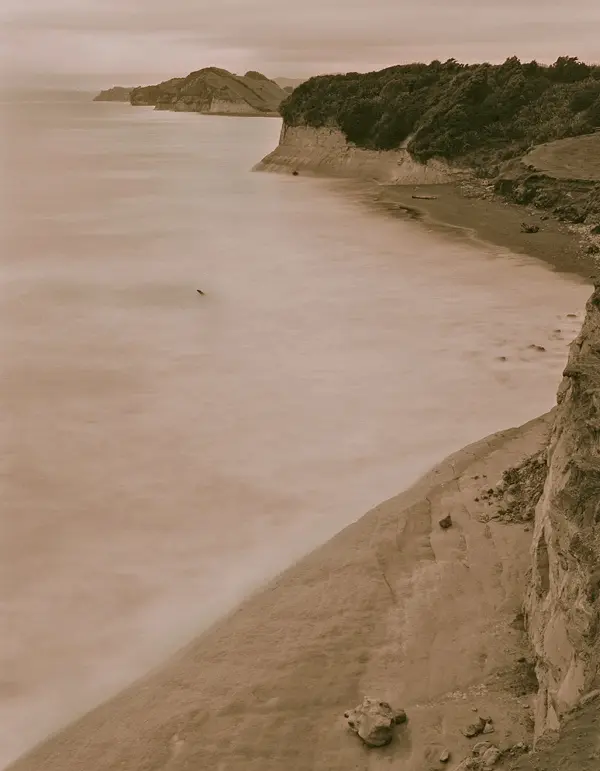55. Twilight surf from the Waitoetoe cliffs
December 23, 2010 7:39 pm

The north Taranaki coast is all soft ash-and-mudstone, and eroding fast. In 1980 we spent New Year’s Eve camping on a spot which is now on the surfline shown here. In April I returned for the first time in 30 years and was surprised to see how much solid earth had since gone seaward.
The best perspective on the beach is from the southern end, as it takes in the Mimi estuary and the bluffy coast north to Pukearuhe. We cut across farmland to some low cliffs, and there at dusk came close to the edge, to look down on to a mudstone shelf and a high tide. Over this shelf the surf was breaking – the wet line runs down to the fallen fragment – but the time exposure, roughly a minute, blurs this completely.
The effect is also noticeable on the middle right rocks, yet a vague sense of sea swell is visible running up the frame, past the protruding log. In contrast, anything not moving in the frame is perfectly sharp. This stems from a technical advantage that dusk has over moonlight photography, in that the much higher light levels match long exposures with the smallest of apertures. From this you get the very best depth of focus.
For this I used medium speed Ilford FP4 film, ISO 125, with a standard lens on a Pentax 6×7. It’s a heavy camera so vertical views challenge the tripod head, but the big negative prints up very nicely. Vertical is not easy with seascapes or coastal vistas, with their broad horizons, because strong vertical elements are usually needed. Once again my favoured “Elevation!” tactic came into play, to find a double curve of coastline to tie up the composition.
An extra tint has been added after scanning, yet I feel the photo might lack tonal drama. However the main drawback to my mind is the need for a scale indicator in the foreground.
Posted by Barney Brewster
Tags: 6x7, coast, composition, film, long exposure, movement, Pentax, surf, Taranaki, tripod, twilight
Categories: Twilight photography
